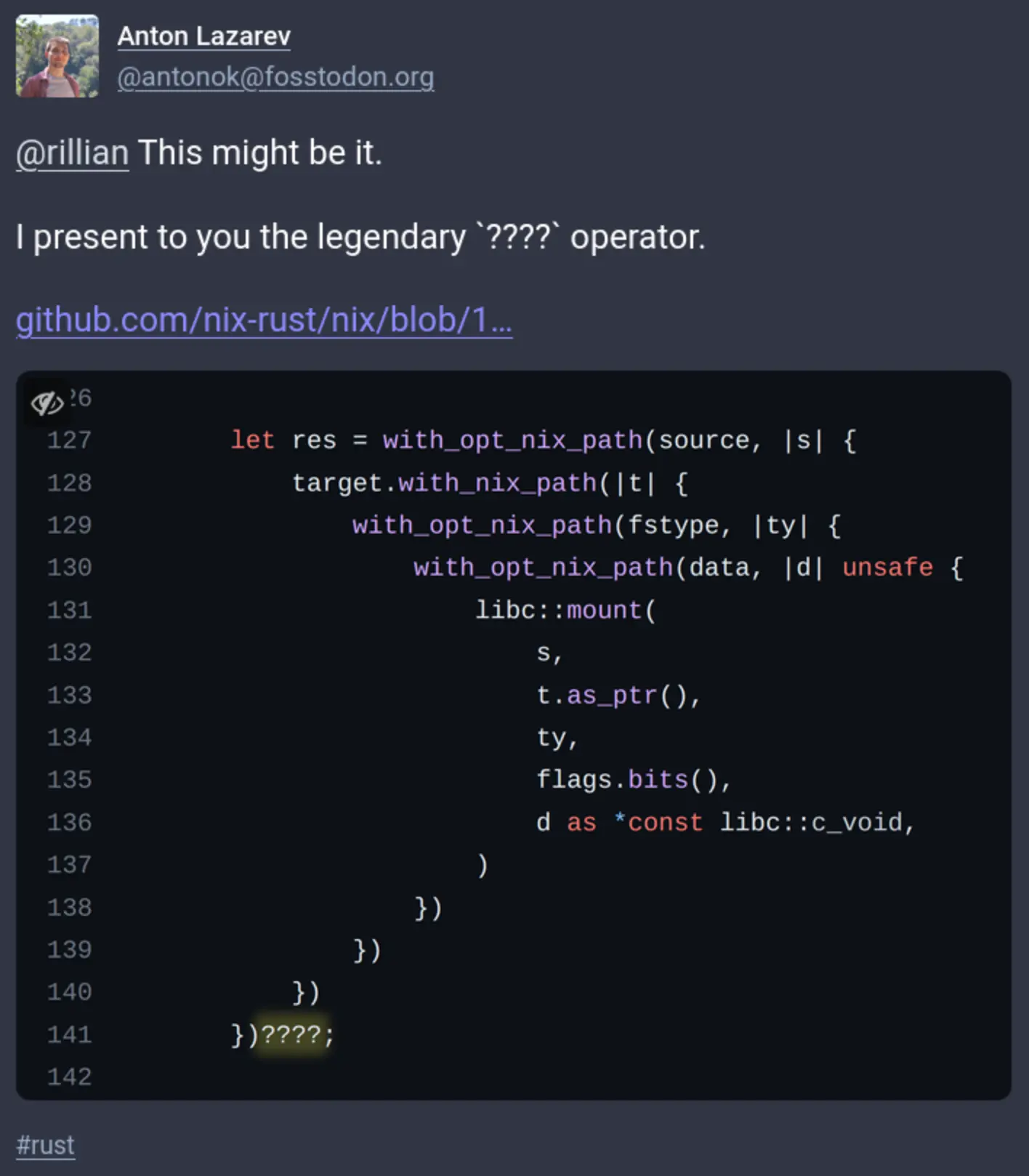But that's not the case here, seeing as they have
if self.len() >= MAX_STACK_ALLOCATION {
return with_nix_path_allocating(self, f);
}
in the code of with_nix_path. And I think they still could've made it return the value instead of calling the passed in function, by using something like
enum NixPathValue {
Short(MaybeUninitᐸ[u8; 1024]>, usize),
Long(CString)
}
impl NixPathValue {
fn as_c_str(&self) -> &CStr {
// ...
impl NixPath for [u8] {
fn to_nix_path(&self) -> ResultᐸNixPathValue> {
// return Short(buf, self.len()) for short paths, and perform all checks here,
// so that NixPathValue.as_c_str can then use CStr::from_bytes_with_nul_unchecked
But I don't know what performance implications that would have, and whether the difference would matter at all. Would there be an unnecessary copy? Would the compiler optimize it out? etc.
Also, from a maintainability standpoint, the context through which the library authors need to manually ensure all the unsafe code is used correctly would be slightly larger.
As a user of a library, I would still prefer all that over the nesting.

